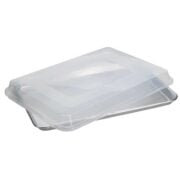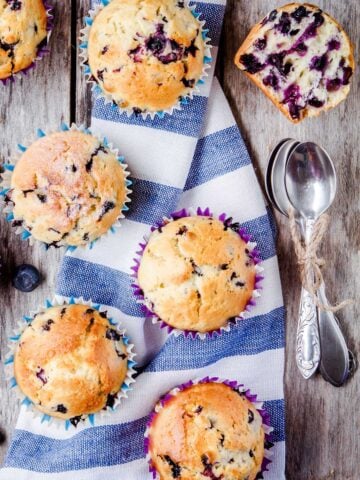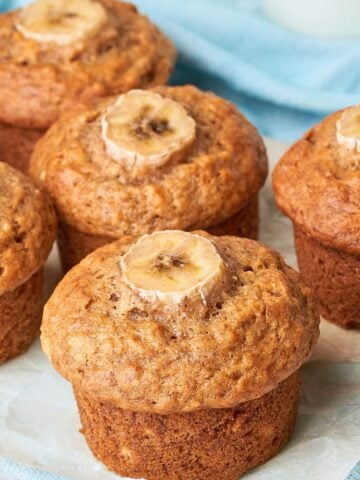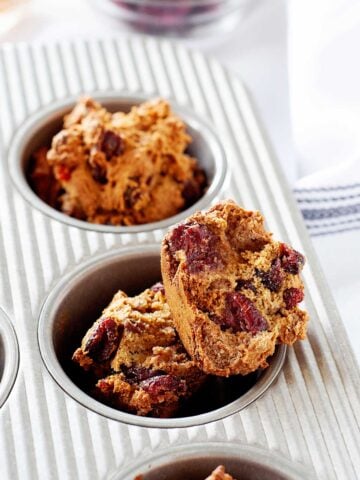This post may contain affiliate links. Read our disclosure policy here.
Want to make a batch of English scones that tastes fit for high tea with the queen? You’ve come to the right place.
This step-by-step recipe will help you make top-notch scone dough and bake it into beautiful golden rounds worthy of being called English scones. What an honor!

Before we get started on the dough, here’s a little backstory:
I first tried scones in Spain as a child. My grandmother would make a batch for breakfast and keep the leftovers so we could enjoy them the next day during afternoon tea.
While scones are not a traditional Spanish baked good, she learned how to make them from her British neighbor when she moved to Uruguay at 20. In their daily tea time, while the kids were in school, they exchanged stories about their dreams of moving across the world.
Since I grew up with my grandparents, scones for breakfast or an afternoon snack have been a part of my life for as long as I can remember.
Now, I’m sharing the classic recipe I’ve enjoyed for many years with you.
What are English Scones
A true English scone has a fluffy, soft texture with crisp edges and looks nothing like what you would find at a local coffee shop. Instead, this recipe is what you would expect to enjoy with jam and clotted cream at high tea.
And if you are wondering what’s the difference between English scones and American scones, the answer is in their shape and flavor. English scones are round and slightly sweet, while American scones are twice the size, triangular, and include add-ins like dried fruit, berries, or chocolate chips. Once you try both, it’s not hard to see or taste the difference.

English Scone Ingredients
A true English scone recipe is made with basic ingredients; as luck has it, you probably have most of those items in your kitchen.
- All-purpose flour: regular all-purpose flour will do the job. You can use 1:1 gluten-free all-purpose flour if you need a gluten-free scone.
- Sugar: English scones aren’t meant to be sweet, so we need just enough sugar to add a light sweet flavor.
- Baking powder: to help the dough rise into a tall-fluffy thing.
- Salt: enhances the other ingredient’s flavors.
- Butter: essential for a scone with soft crumbs.
- Dried currants: the one traditional add-in for English scones. You can also use regular raisins, golden raisins, cranberries, or any dried and chopped fruit.
- Milk: whole milk works best. Some will go into the dough, and the remaining is brushed over the scones so the tops get golden.
- Eggs: holds the dough together and help it rise in the oven.

How to Make English Scones
Here are step-by-step directions on how to make English scones a Brit would approve of:
- Preheat the oven
Adjust the oven rack to the upper-middle position and preheat the oven to 500F. Line a baking sheet with parchment paper - Start the dough
Pulse the flour, sugar, baking powder, and salt in a food processor. Add the cubed butter and pulse to combine until the mixture resembles fine crumbs. Transfer the dry mixture to a large bowl and stir in the currants. - Add the wet ingredients
Reserve 2 tablespoons of milk in a small bowl, and whisk the remaining milk with the eggs. Pour the milk mixture into the dry ingredients and fold until just combined. - Knead
Transfer the dough to a well-floured surface and shape it into a ball. Using your hands, knead the dough until it’s smooth and press it into a disc. - Roll it out
Use a rolling pin to roll the disc into a 9-inch round that’s 1-inch thick. Use a floured 2 ½-inch biscuit cutter or small jar lid to cut the dough into 8 rounds. - Bake
Arrange the cut dough onto the baking sheet and brush the tops with the milk. Reduce the oven temperature to 425F and bake the sones for 10 to 12 minutes, rotating the sheet halfway through. - Grab a scone
Transfer the scones to a wire cooling rack and cool for 10 minutes before serving with jam and butter.
You can also watch the video below to see how to make these English scones turn out a success!
Success Tips for British Scones
The recipe above and these simple tips will help you achieve the perfect scone texture and flavor:
Use softened butter
Gives the dough a soft, sandy texture that’s much easier to work with and bake into fluffy scones.
Don’t overmix the dough
You should only knead the dough until it’s smooth, about 25 to 30 times. Otherwise, mixing the dough too much will overwork the gluten and give the baked scones a tough texture.
Use whole milk
Whole milk has more fat and makes the scone texture fine-crumbled and tender.

How to Freeze Scones
In case you want to keep a batch of these scones on hand for unplanned company or quick breakfasts, you can freeze scones baked or unbaked. To freeze baked scones, let them cool down to room temperature and freeze in an airtight bag for up to 2 months.
To freeze unbaked scones, make the recipe and cut the dough into circles. Place the scones on a baking sheet, freeze them, and once frozen, transfer them inside a large zip bag.
To bake, place the frozen scones straight from the freezer onto a baking sheet and bake for an extra 5 minutes, or until cooked through.
How to Reheat Leftover Scones
As a child, I ate “next day scones” quite often, and they are best reheated or lightly toasted. To reheat leftover scones, simply bake them at 300F for 5 minutes until they are toasty and warm. If you have a toaster oven, put them through one toast cycle.
To reheat scones in a toaster, slice them in half and toast them to your liking.
Can English Scones Be Made Ahead?
You can make English scones ahead by doubling the batch and freezing them; it’s a terrific way to have scones on demand. I like to freeze scones in a zip bag and reheat them using the instructions above or bake them from frozen.
Otherwise, you can store baked scones in an airtight container at room temperature for a few days or refrigerate them for up to 2 weeks.
What to Serve with English Scones
To enjoy English scones the traditional way, you’ll brew yourself a cup of hot tea and serve them with any of the delicious spread and toppings below:
- Butter
- Clotted cream (like whipped cream, but less sugar)
- Chia Seed Jam
- Any jam or preserves
- Lemon curd
Perfect English Scones

Ingredients
- 3 cups all-purpose flour
- ⅓ cup sugar
- 2 teaspoons baking powder
- ½ teaspoon salt
- 8 tablespoons unsalted butter, cut into ½-inch pieces and softened
- ¾ cup dried currants*
- 1 cup whole milk
- 2 large eggs
Instructions
- Adjust oven rack to upper-middle position and heat oven to 500F. Line a rimmed baking sheet with parchment paper.
- Pulse the flour, sugar, baking powder, and salt in a food processor until combined, about 5 pulses. Add butter and pulse until fully incorporated and the mixture looks like very fine crumbs with no visible butter, about 20 pulses.
- Transfer the mixture to a large bowl and stir in the currants.
- In a separate medium bowl, whisk the milk and eggs. Set aside 2 tablespoons of the milk mixture. Add the remaining milk mixture to the dry ingredients and fold with a rubber spatula until just barely any dry bits of flour remain.
- Transfer the dough to a well-floured counter and gather it into a ball. With floured hands, knead until the surface is smooth and free of cracks, about 25 to 30 times. Press gently to form a disc.
- Using a floured rolling pin, roll the disk into a 9-inch round that’s 1-inch thick. Using a floured 2 ½-inch round cutter, stamp out 8 rounds, recoating the cutter with flour if it begins to stick.
- Arrange the scones onto the prepared baking sheet. Gather the dough scraps, reshape them into a ball, and knead gently until the surface is smooth. Roll dough to 1-inch thickness and stamp out 4 rounds.
- Discard the remaining dough.
- Brush the tops of the scones with the reserved milk mixture. Reduce the oven temperature to 425F and bake the scones until risen and golden brown, 10 to 12 minutes, rotating the sheet halfway through baking.
- Transfer the scones to a wire cooling rack and let cool for at least 10 minutes. Serve scones warm or at room temperature.







Karen says
These scones turned out perfectly! I don’t usually make scones, so this was a first for me, but they were great!
Megan says
Epic English scones recipe! I baked them last weekend (I added raisins) and they dissapeared from the table super fast!